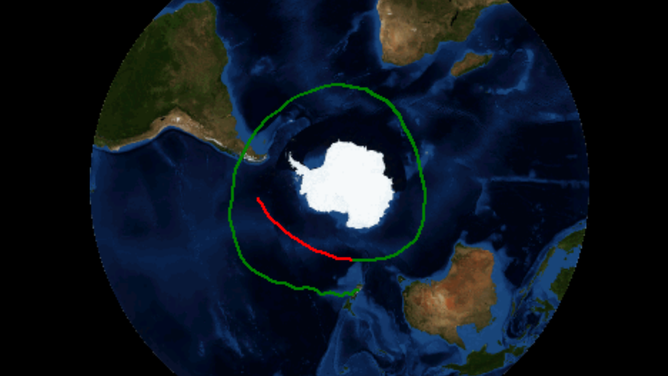NASA’s super balloon captures stunning images of distant galaxies
The giant helium balloon is the size of a football field and is carrying a Super-pressure Balloon-borne Imaging Telescope (SuperBIT). Researchers say the telescope is capable of taking sharp images of distant galaxies.
New video shows how NASA launched a super balloon from New Zealand
A massive balloon is making its way across the globe, but it is all being done in the name of science. The NASA craft is carrying a Super-pressure Balloon-borne Imaging Telescope (SuperBIT). Researchers say the telescope is capable of taking sharp images of distant galaxies.
A football field-sized super balloon floating through the stratosphere with a high-tech telescope is taking stunning images of distant galaxies that NASA is sharing with stargazers.
The Super Pressure Balloon Imaging Telescope (SuperBIT) launched from New Zealand on April 16 and, on the first ten days of its mission, made a giant loop around the world’s South Pole.
Newly released photos show what are known as the Antennae Galaxies and the Tarantula Nebula.
NASA says the galaxies are in the process of colliding some 60 million light-years away from Earth, and the nebula is much closer at only 161,000 light-years away.
The Tarantula Nebula is thought to be the largest star-forming region of the galaxies that are nearest to our Milky Way.
HOW A SUSPECTED CHINESE SPY BALLOON IS DIFFERENT THAN AMERICA’S CLASSIC WEATHER BALLOON
The balloon’s position, about 108,000 feet above Earth’s surface, allows clear pictures of space without interference from clouds or other adverse impacts in the atmosphere
Without requiring a rocket launch to reach its cruising altitude, Princeton University said they were able to save millions on what otherwise would have resembled a space-orbiting satellite.
The balloon and telescope are expected to continue to circumnavigate the globe for around 100 days, and if a problem should arise, operators have the ability to lower the craft due to onboard mechanisms.
The goal of the mission is to analyze and study the mysterious substance known as dark matter in outer space.
So far, researchers consider the quality of the images to be comparable to those taken by the Hubble Space Telescope but at a fraction of the cost.
ACCURATE FORECASTS WOULD BE ALMOST IMPOSSIBLE WITHOUT WEATHER BALLOONS
During its mission, the balloon has only spent a limited time over land, but the U.S. government promised before launch that the U.S. State Department would coordinate country overflight approvals.
Due to the Covid-19 pandemic, the mission is running about two years behind schedule, but NASA is already planning for another super balloon launch in 2023.
Once airborne, research teams say the Extreme Universe Space Observatory 2 project will be used to detect and observe ultra-high energy cosmic-ray particles.
Track the balloon carrying the Super Pressure Balloon Imaging Telescope (SuperBIT) in real-time at csbf.nasa.gov.

Super-pressure Balloon-borne Imaging Telescope (SuperBIT) path
(NASA)


